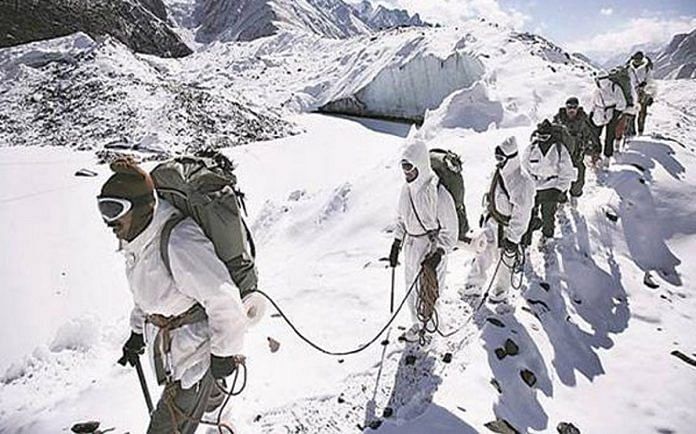New Delhi: The army is looking to dispose of as much as 100 tonnes of waste every year from Siachen, the world’s highest battlefield, a senior officer said Tuesday.
The projected target is less than 50 per cent of the waste generated on the icy heights of Siachen annually, which is estimated at around 236 tonnes.
According to the army officer, the “Swachh Siachen Abhiyan” is an ongoing initiative under which the force has disposed of waste worth 130 tonnes since January 2018.
This, the officer said, included 48.4 tonnes of biodegradable waste like cartons and packets, 40.32 tonnes of non-biodegradable non-metallic scrap (including plastics), and 42.45 tonnes of non-biodegradable metallic trash.
The challenge of height
At any point, there are over 2,000 personnel posted in and around Siachen.
The biggest challenge in cleaning up Siachen has been the height of the glacier, which ranges between 18,000 and 21,000 feet.
“Nothing degrades at sub-zero temperatures. So, everything has to be brought down,” the officer said, adding that baling presses — machines that crush garbage into a compact unit — are used to clear the garbage.
Non-metallic waste, meanwhile, is dealt with through three incinerators, two located at villages at a height of 10,000 feet and the third at base camp, 12,000 feet. The machines, the army officer said, do not produce carbon monoxide.
For metallic waste, there are three sites for collection and crushing, and the army plans to procure industrial crushers to process it.
Also read: Trail to Everest is littered with bodies. But no one will say who is actually responsible
‘Survival of troops’
The large-scale clean-up at the glacier comes over three decades after the army took control of Siachen following the 1984 Operation Meghdoot.
It was in January last year that the army started studying the menace of growing garbage at Siachen, and came out with a concept paper on the issue in a month.
“The process of waste generation is essentially rooted in the survival of troops present on the glacier and their need to be operationally prepared and logistically supported to undertake combat operations in such terrain and weather conditions,” the concept paper noted.
“Since every item inducted into the glacier is a potential source of waste, the entire process of waste generation needs to be viewed holistically through total tonnage inducted into the glacier for requisite logistics support to these troops,” it said. “Even at the broadest level, nature of waste and quantity varies from location to location.”
The paper also noted that processing human waste remains a challenge.
Also read: Liquor bottles & food cans among 11,000 kg of trash found on Mt Everest






